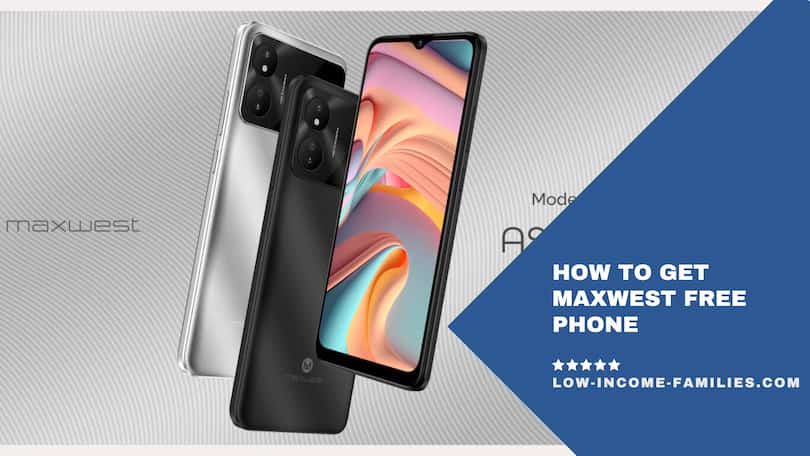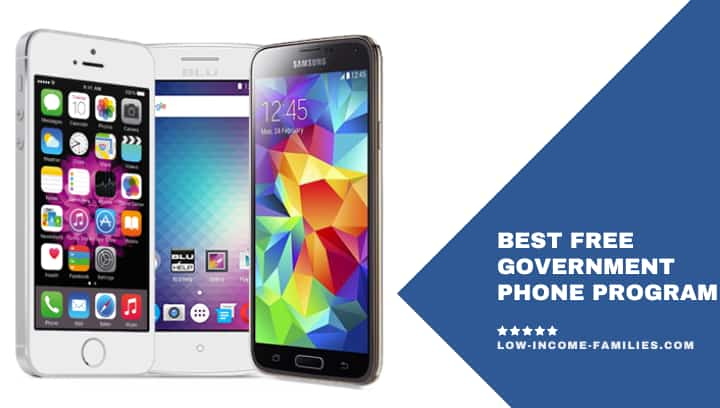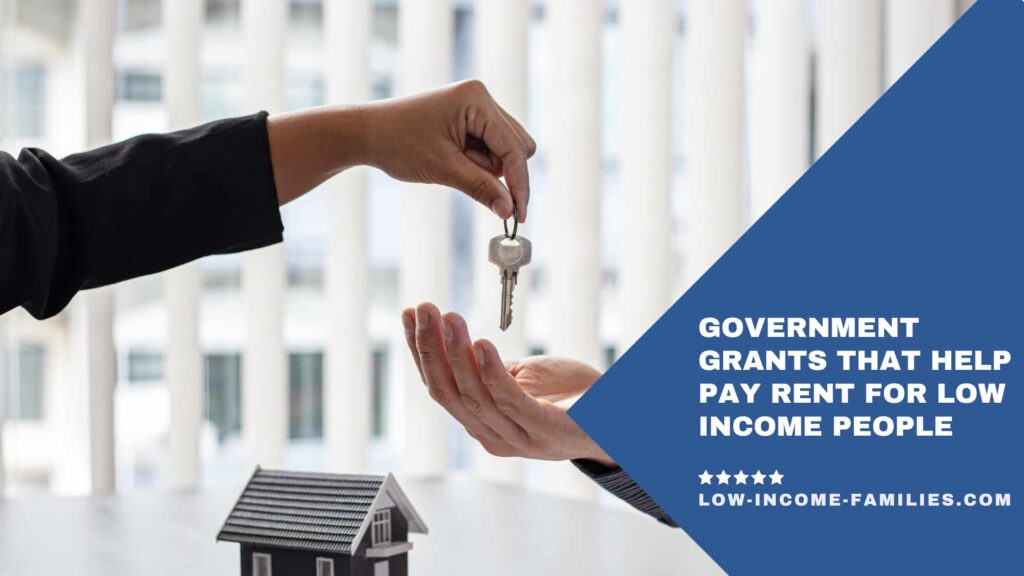In the modern era where technology bridges gaps and creates opportunities, the Free iPad for Deaf and Hard of Hearing Program emerges as a beacon of hope and accessibility for those with hearing challenges.
Envisioned to empower and enhance communication, this initiative in 2025 aims to provide iPads, specifically tailored with assistive features and applications, to the deaf and hard-of-hearing community.
The program symbolizes an inclusive approach, leveraging advanced technology to aid in education, daily communication, and access to information.
With the increasing reliance on digital platforms for most aspects of life, this initiative takes a significant step forward in ensuring that individuals with hearing impairments are not left behind.
Navigating through the digital world can be particularly challenging for the deaf and hard of hearing.
The iPad for deaf and iPad for hearing-impaired individuals are not just electronic devices; they represent a gateway to a world that might otherwise be inaccessible.
These iPads are equipped with specialized tools and applications, making them a vital resource for overcoming communication barriers.
The initiative thus aligns with the broader objective of digital inclusivity, ensuring that the advantages of modern technology are accessible to all, regardless of their hearing abilities.
What is the Free iPad for Deaf and Hard of Hearing Program?
The Free iPad for Deaf and Hard of Hearing Program is an innovative initiative aimed at supporting individuals with hearing impairments by providing them with specially equipped iPads.
These devices are not ordinary iPads; they are customized with features and applications designed to meet the unique needs of the deaf and hard-of-hearing community.
The program is rooted in the understanding that access to technology is a key factor in enhancing the quality of life, education, and communication for those facing hearing challenges.
What sets these iPads apart is their array of assistive technology. This includes apps and features that facilitate communication, such as live captioning, video calling capabilities tailored for sign language usage, and various other tools that transform sound into visual or tactile forms.
Moreover, these iPads offer educational resources and accessibility features like VoiceOver, Magnifier, and RTT calls, making them suitable for diverse needs within the deaf and hearing-impaired community.
By offering such technology, the program aims to bridge the communication gap, providing a level playing field in education, employment, and social interactions.
It recognizes the importance of staying connected in a world that is increasingly digital and ensures that hearing impairments do not hinder one’s ability to engage with the world around them.
The Free iPad for Deaf and Hard of Hearing Program is, therefore, more than just a distribution of devices; it’s an initiative fostering independence, confidence, and engagement in a world where digital communication is paramount.
How to Get a Free iPad for Deaf and Hard of Hearing
Obtaining a free iPad for individuals with hearing challenges involves a comprehensive process.
The aim is to ensure that iPad for deaf and hearing-impaired individuals are provided to those who can benefit most from them. Here’s how to navigate this process:
- Review Eligibility: The first step is to ensure that you meet the specific criteria outlined by the program. This includes standards for hearing loss, financial needs, or residency requirements.
- Gather Documents: Prepare the necessary documentation required by the program. This typically includes proof of hearing loss, income, and residency. Each provider may have different documentation requirements.
- Contact the Program: Reach out to the chosen program to inquire about their application process. This step is crucial to understand any specific requirements or paperwork needed.
- Complete the Application Process: Follow the instructions provided by the program to complete your application. This usually involves filling out forms, submitting your documentation, and providing any additional information they might request.
- Await Response: After submitting your application, the program will review it to determine your eligibility. If you meet the criteria, they will contact you regarding the next steps.
- Receive the iPad: Once your application is approved, the program will provide you with an iPad equipped with assistive apps and features suitable for your needs.
Top 5 Free iPads for Deaf and Hard of Hearing Providers
Several organizations actively provide free iPads to the deaf and hard of hearing community. Here are the top 5 providers:
Hearing Loss Association of America (HLAA):
- HLAA offers iPads through their Hearing Loop Project, funded by the FCC’s Universal Service Fund.
- These iPads come equipped with various useful apps and features specifically designed to aid people with hearing loss.
- Eligibility is based on certain hearing loss criteria and financial need.
Starkey Hearing Foundation:
- Focuses on aiding deaf and hard of hearing children through their Hearing Is Life initiative.
- Provides iPads complete with assistive apps and offers mentoring services.
- Eligibility is determined by income and the degree of hearing loss.
Lions Club International:
- Offers iPads through their Hearing and Speech Conservation Foundation.
- The eligibility for these iPads is based on financial need and specific hearing loss criteria.
- The iPads are loaded with various assistive applications to aid users.
UnitedHealthcare:
- Supports deaf and hard of hearing children and youth through their HearingHealth4Kids plan.
- Those who are part of UnitedHealthcare insurance and meet certain hearing loss criteria are eligible to receive these iPads, which are equipped with assistive apps.
Telecommunications Relay Service (TRS):
- A government program, TRS offers comprehensive support, including free relay services to those with hearing difficulties.
- Some TRS providers may also offer free iPads to eligible individuals who meet specific income and hearing loss criteria.
Eligibility Criteria for Free iPad for Deaf and Hard of Hearing
To qualify for the Free iPad for Deaf and Hard of Hearing program, individuals must meet specific criteria.
These criteria are essential to ensure that the iPads are provided to those who will benefit the most. The eligibility requirements typically include:
Hearing Loss Criteria:
- Applicants must have a level of hearing loss that meets the program’s standards.
- This often requires a hearing level of 70 decibels or higher in the better ear.
Income Evaluation:
- Eligibility often includes a financial assessment.
- Applicants should have a total income that matches or is below a certain threshold, typically around 135% of the federal poverty level.
Residency Requirement:
- Applicants must be residents of the United States.
- This ensures that the program is benefiting those within the country where it is offered.
Age Consideration:
- Some programs have age requirements.
- Typically, individuals need to be 18 years or older to be eligible.
Required Documents for Free iPad for Deaf and Hard of Hearing
When applying for the program, specific documentation is required to verify eligibility. The typical documents needed include:
Proof of Hearing Loss:
- An audiogram or other medical records confirming the individual’s hearing condition.
- This serves as a verification of the hearing loss criteria.
Proof of Income:
- Documents like a tax return or other financial statements that show the level of income.
- This is used to assess the financial need of the applicant.
Proof of Residency:
- A valid document, such as a driver’s license or government-issued ID, to confirm the applicant’s address.
- This verifies that the applicant is a resident of the United States.
Letter of Support from a Healthcare Professional:
- A recommendation or confirmation from a doctor or healthcare provider stating that the applicant meets the program’s criteria for hearing loss and would benefit from an iPad.
How to Apply for a Free iPad for Deaf and Hard of Hearing
Applying for the Free iPad for Deaf and Hard of Hearing program involves a multi-step process:
Review Eligibility:
- The first step is to ensure you meet the program’s criteria, including specific standards for hearing loss, financial needs, or residency requirements.
Gather Documents:
- Prepare the necessary documentation required by the program, including proof of hearing loss, income, and residency.
Contact the Program:
- Reach out to the chosen program to inquire about their application process.
- This step is crucial to understand any specific requirements or paperwork needed.
Complete the Application Process:
- Follow the instructions provided by the program to complete your application.
- This usually involves filling out forms, submitting your documentation, and providing any additional information requested.
Await Response:
- After submitting your application, the program will review it to determine your eligibility.
- If you meet the criteria, they will contact you regarding the next steps.
Receive the iPad:
- Once your application is approved, the program will provide you with an iPad equipped with assistive apps and features suitable for your needs.
Top 5 Free iPad Models Offered for Deaf and Hearing Impaired People
The Free iPad for Deaf and Hard of Hearing program offers various models, each equipped with features tailored to assist individuals with hearing impairments. Here are the top 5 iPad models available:
iPad Air 5th Gen:
- Performance: Powered by the A15 Bionic chip, ensuring smooth and efficient operation.
- Display and Camera: Features a 10.9-inch Liquid Retina display and a 12MP Ultra Wide front camera with Center Stage technology, ideal for high-quality video calls and effective use of sign language.
- Assistive Features: Supports Live Captions Zoom and includes built-in accessibility features like VoiceOver and Magnifier.
iPad mini 6th Gen:
- Compact Design: Offers an 8.3-inch Liquid Retina display, perfect for those preferring a smaller, portable device.
- Performance and Camera: Runs on the A15 Bionic chip with a 12MP Ultra Wide front camera, maintaining functionality in a compact size.
- Accessibility: Includes essential assistive technologies and various accessibility settings.
iPad 9th Gen:
- Affordability and Performance: Equipped with an A13 Bionic chip, balancing performance and cost-effectiveness.
- Display and Camera: Features a Retina display and a 12MP front camera for clear video communication.
- Assistive Technology Support: Comes with support for Live Captions, Zoom, and standard iOS accessibility features.
iPad Pro 11 inch:
- Advanced Performance: Utilizes the M1 chip for high-level performance requirements.
- Superior Display and Camera: Boasts an 11-inch Liquid Retina XDR display and a 12MP Ultra Wide front camera with advanced capabilities.
- Enhanced Accessibility: Offers a wide range of assistive features, including Live Captions, Zoom, and comprehensive iOS accessibility options.
iPad Pro 12.9 inch:
- Large Screen Experience: Features a 12.9-inch Liquid Retina XDR display, suitable for those needing a larger screen for clarity, like in reading sign language.
- Cutting-edge Technology: Powered by the M1 chip with a LiDAR Scanner for enhanced AR experiences.
- Comprehensive Accessibility: Supports all necessary assistive technologies and includes a full suite of iOS accessibility features.
Free iPad for Deaf and Hard of Hearing Models Comparison Table
| iPad Model | Size | Display | Processor | Functionalities for Deaf People | Other Features |
| iPad Air 5th Gen | 10.9 inches | Liquid Retina display | A15 Bionic chip | Supports Live Captions, Zoom, assistive technology apps | 5G connectivity, 12MP Ultra Wide front camera with Center Stage, Touch ID, USB C port |
| iPad mini 6th Gen | 8.3 inches | Liquid Retina display | A15 Bionic chip | Supports Live Captions, Zoom, assistive technology apps | 5G connectivity, 12MP Ultra Wide front camera with Center Stage, Touch ID, USB C port |
| iPad 9th Gen | 10.2 inches | Retina display | A13 Bionic chip | Supports Live Captions, Zoom, assistive technology apps | 8MP front camera, Touch ID, Lightning port |
| iPad Pro 11 inch | 11 inches | Liquid Retina XDR display | M1 chip | Supports Live Captions, Zoom, assistive technology apps | 5G connectivity, 12MP Ultra Wide front camera with Center Stage, LiDAR Scanner, Thunderbolt port |
| iPad Pro 12.9 inch | 12.9 inches | Liquid Retina XDR display | M1 chip | Supports Live Captions, Zoom, assistive technology apps | 5G connectivity, 12MP Ultra Wide front camera with Center Stage, LiDAR Scanner, Thunderbolt port |
This comparison table provides a clear overview of the various iPad models available through the program, highlighting their key features and functionalities. Each model caters to the specific needs and preferences of the deaf and hard-of-hearing community, ensuring users can choose the best device for their individual requirements.
Top 5 Apps for Deaf or Hard of Hearing People
Enhancing the utility of iPads for the deaf and hard of hearing, specific applications have been developed to aid communication, education, and accessibility. These top 5 apps are crucial in leveraging technology to bridge communication gaps:
Ava:
- Key Functionality: Ava transforms spoken language into text in real-time, using advanced speech recognition technology.
- Usage Context: Ideal in group discussions, lectures, or meetings where it’s challenging to follow conversations solely by lip-reading or sign language.
- User Interface: Offers a user-friendly interface that is easy to navigate, even for those not tech-savvy.
RogerVoice:
- Unique Feature: Provides live transcription and voice synthesis for phone calls, breaking down communication barriers over the phone.
- Language Support: Covers over 100 languages, making it highly versatile for global use.
- Additional Support: Includes video interpreter support for more complex interactions, enhancing its usefulness in diverse scenarios.
Sound Amplifier:
- Core Function: Amplifies and clarifies sound while reducing unwanted background noise.
- Customizable Settings: Allows users to adjust frequencies to suit their hearing preferences.
- Environment Suitability: Particularly effective in settings like restaurants, public transport, or busy streets.
TapSOS:
- Emergency Assistance: Non-verbal method to contact emergency services, sharing critical information quickly and silently.
- Profile Customization: Users can create profiles with medical information, ensuring informed assistance in emergencies.
- Awards and Recognition: Its innovative approach to emergency communication has been widely recognized and awarded.
Subtitle Viewer:
- Functionality: Captures and displays subtitles in real-time for various media, including movies and television shows.
- Sync Capability: Can synchronize with audio from movies in theaters or at home, making entertainment more accessible.
- Multilingual Support: Offers subtitle support in multiple languages, catering to a diverse user base.
Benefits of the Free iPad for Deaf and Hard of Hearing Program
The Free iPad for Deaf and Hard of Hearing Program goes beyond the mere provision of technology; it offers a plethora of benefits that touch various aspects of life:
Enhanced Communication:
- Direct Benefit: Facilitates clear and effective communication, vital in education, work, and social interactions.
- Technology Integration: Incorporation of cutting-edge communication apps and features tailored for the deaf and hard of hearing.
Accessibility to Information:
- Digital Inclusion: Ensures equal access to digital content and resources, which is critical in today’s information-driven society.
- Learning and Development: Access to educational resources and platforms, promoting continuous learning and skill development.
Empowerment in Group Settings:
- Active Participation: Tools and apps that enable active involvement in group discussions and meetings.
- Social Integration: Reduces feelings of isolation, promoting a sense of belonging and community engagement.
Educational Support:
- Academic Accessibility: Provides educational apps and resources, making learning more accessible and engaging.
- Personalized Learning: Enables tailored educational experiences to cater to individual learning styles and needs.
Independence and Improved Quality of Life:
- Daily Life Management: Assists in managing everyday tasks and responsibilities, fostering independence.
- Emotional Well-being: Enhances confidence and self-esteem, contributing to overall mental health and well-being.
How to Choose the Best Free iPad for Deaf and Hard of Hearing Program
Selecting the right program for a free iPad tailored for the deaf and hard of hearing can significantly impact the user experience. Here’s a detailed guide to making an informed choice:
Evaluate Eligibility Criteria:
- Review the specific criteria of each program, such as the level of hearing loss required, income limits, and residency status.
- Ensure that your personal circumstances align with these requirements to increase the likelihood of acceptance.
Research Program Offerings:
- Investigate what each program provides alongside the iPad. Look for programs that offer iPads with assistive apps and technologies that cater specifically to the deaf and hearing impaired.
- Consider whether the program offers additional support, such as training or aftercare services.
Compare iPad Models:
- Review the different iPad models available through the programs. Each model, like the iPad for the deaf or the iPad for the hearing impaired, comes with its own set of features.
- Determine which model’s features and functionalities align best with your individual needs or preferences.
Understand Application Processes:
- Familiarize yourself with the application steps required for each program. Check for any specific documentation or criteria you need to meet.
- Make sure that you can provide accurate information and necessary documentation as required.
Review Terms and Conditions:
- Carefully read the program’s terms and conditions. Understand any obligations or commitments associated with receiving the free iPad.
- This step is crucial to avoid any surprises after you have received the device.
Confirm Accessibility and Support:
- Ensure that the program offers ongoing support and resources for setting up the device, using it effectively, and troubleshooting any issues that may arise.
- Support services can greatly enhance your experience with the iPad.
How Can I Use My iPad for Hearing Impaired?
Using an iPad effectively for hearing impairments involves leveraging its features and apps designed to address specific challenges. Here’s how you can maximize the use of an iPad if you are hearing impaired:
Utilize Accessibility Features:
- Explore built-in accessibility features like closed captions, visual alerts, and FaceTime for video calls. These features are designed to make the iPad more accessible for the hearing impaired.
Install Specialized Apps:
- Download apps specifically designed for the deaf and hard of hearing, such as real-time transcription apps, sign language apps, and apps that amplify sound or convert speech to text.
Customize Settings:
- Personalize the iPad’s settings to suit your hearing needs. Adjust the audio and visual settings, and set up any hearing devices you use to work with the iPad.
Leverage Educational Tools:
- Use the iPad as an educational tool. Many apps and resources are available to help with language development, learning sign language, and improving communication skills.
Stay Connected:
- Take advantage of the iPad’s connectivity features to stay in touch with friends, family, and support networks. Utilize social media, email, and messaging apps, which can be vital for communication.
Conclusion
The Free iPad for Deaf and Hard of Hearing Program offers a valuable resource for those with hearing challenges, providing tools for improved communication, education, and independence.
By carefully selecting the right program and making the most of the iPad’s capabilities, individuals with hearing impairments can significantly enhance their daily lives and interactions with the world around them.
This initiative not only empowers the deaf and hard-of-hearing community but also underscores the importance of accessibility in technology.
[the_ad id=”39205″]
Frequently Asked Questions (FAQ):
What Is the Free iPad for Deaf and Hard of Hearing Program?
The Free iPad for Deaf and Hard of Hearing Program is an innovative initiative that aims to support individuals with hearing impairments by providing specially equipped iPads. These iPads come with customized features and applications designed to meet the unique needs of the deaf and hard-of-hearing community.
How Does the Program Enhance Communication for the Deaf and Hard of Hearing?
The iPads provided by the program are equipped with a range of assistive technologies, including live captioning, video calling capabilities tailored for sign language usage, and other tools that transform sound into visual or tactile forms. These features aim to bridge communication gaps in education, employment, and social interactions.
What Organizations Provide Free iPads for the Deaf and Hard of Hearing?
Some of the top organizations providing free iPads for the deaf and hard of hearing include the Hearing Loss Association of America (HLAA), Starkey Hearing Foundation, Lions Club International, UnitedHealthcare, and the Telecommunications Relay Service (TRS).
How Can I Apply for a Free iPad for Deaf and Hard of Hearing?
To apply for the program, you need to review eligibility criteria, gather necessary documents (proof of hearing loss, income, and residency), contact the chosen program, complete the application process as instructed, and await a response. If approved, you will receive an iPad equipped with assistive apps.
What Are the Eligibility Criteria for the Free iPad for Deaf and Hard of Hearing Program?
Eligibility criteria typically include specific standards for hearing loss, financial assessments, residency requirements, and, in some cases, age considerations. Applicants usually need to provide proof of hearing loss, income, and residency.
What Documents Are Required for the Application Process?
The required documents often include proof of hearing loss (audiogram or medical records), proof of income (tax return or financial statements), proof of residency (government-issued ID), and a letter of support from a healthcare professional confirming the applicant’s eligibility.
What iPad Models Are Offered Through the Program, and How Do They Differ?
The program offers various iPad models, each tailored to assist individuals with hearing impairments. The top 5 models include iPad Air 5th Gen, iPad mini 6th Gen, iPad 9th Gen, iPad Pro 11 inch, and iPad Pro 12.9 inch. They differ in size, display, processor, and functionalities designed to meet specific needs.
How Can I Use My iPad Effectively If I Am Hearing Impaired?
To use the iPad effectively for hearing impairments, individuals can leverage built-in accessibility features, install specialized apps for real-time transcription or sign language, customize settings for audio and visual preferences, use the iPad for educational purposes, and stay connected with friends and family through various communication apps.
What Are the Benefits of the Free iPad for Deaf and Hard of Hearing Program?
The program offers enhanced communication, accessibility to information, empowerment in group settings, educational support, and overall improved independence and quality of life for individuals with hearing challenges.
How Do I Choose the Best Free iPad for Deaf and Hard of Hearing Program?
To choose the best program, individuals should evaluate eligibility criteria, research program offerings, compare iPad models, understand application processes, review terms and conditions, and confirm accessibility and support services offered by the program.




